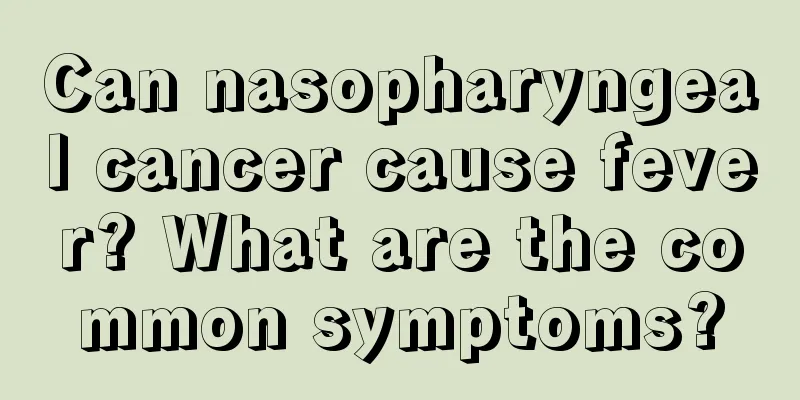Honeycomb treats allergic rhinitis

|
A beehive is the place where bees live and reproduce, and is made up of honeycombs, which people call honeycombs. The nest cells are hexagonal chambers. Honeycomb may not look like anything special, but it is an edible health food. Honeycomb can treat allergic rhinitis. Folk culture has a long history of using fresh honeycomb to treat allergic rhinitis, and it has a good effect. What is his treatment principle? Etiology and pathogenesis of allergic rhinitis Allergic rhinitis belongs to the category of "allergic rhinitis", also known as sneezing. In traditional Chinese medicine treatment, it is necessary to distinguish the root cause from the symptoms. The root is deficiency and the symptoms are excess. Deficiency is mainly caused by lung qi deficiency and cold, lung and spleen qi deficiency, and kidney yang deficiency, while symptoms are caused by exogenous wind-cold and other factors. It is prone to occur when the body's vital energy is weak and evil energy is strong, especially when it is triggered by factors such as fatigue and insomnia. The principles of treatment are to warm and tonify the lung qi, strengthen the spleen and replenish qi, nourish the kidney and restrain qi, and dispel wind and cold. The honeycomb has a therapeutic effect on both the symptoms and the root causes. Modern medicine believes that there are three necessary conditions for allergic rhinitis: atopic individuals, that is, allergic constitutions. Substances that cause the body's immune response are called allergens. Atopic individuals encounter specific antigens. Allergic rhinitis refers to a non-infectious inflammatory disease of the nasal mucosa caused by the release of mediators (mainly histamine) mediated by immunoglobulin E (IgE) after an atopic individual is exposed to allergens, with the participation of multiple immune active cells and cytokines. The main pathological factors are genetic and environmental factors related to exposure to allergens, and this factor may occur at any age. Patients have an atopic physique and the disease often clusters in families. Allergens that cause allergies are antigens that induce and react with specific IgE antibodies. Once an allergy-causing antigen of the same type is encountered, the disease is likely to occur. Allergic antigens are divided into inhaled allergens, food allergens, and skin allergens. Inhaled allergens are generally the main ones. Its antigens mostly come from animals, plants, fungi, dust or occupational substances. Effect of Honeycomb on Allergic Rhinitis Honeycomb, also known as beehive, is a natural product. Due to their different sources and medicinal values, they are divided into beehives and honeycombs, which are obviously different from each other. Beehives are slightly poisonous, so my country has had valuable experience in using beehives to treat rhinitis since ancient times, and there have also been related studies in modern times. As early as 2,000 years ago in the Eastern Han Dynasty, the pharmacology work "Shennong Bencao Jing" recorded the use of honeycomb as medicine. In the Preface to Shennong's Herbal Classic, it is stated that "some medicinal properties are suitable for ointment decoction, and the properties of the medicine should be followed and should not be violated." It clearly states that the dosage form and preparation method of beehive is "preferably boiled over fire." Therefore, honeycomb ointment can exert its therapeutic effect more effectively than other dosage forms. Modern pharmacological research shows that the composition of honeycomb is quite complex, including beeswax, resin, oil, pigment, tannin, sugar, organic acid, fatty acid, glycoside and trace elements such as iron, calcium, copper, potassium and cobalt. Its medicinal value mainly lies in anti-inflammatory, immunomodulatory, antibacterial, analgesic and anti-cancer. There are many reports and experiences of using beehives to treat allergic rhinitis among the Chinese people, and this effect is generally recognized by beekeepers. Bai reported using honeycomb alone to treat rhinitis. 1.5 kg of honeycomb was boiled in three times. Each time, 1/3 of the honeycomb was taken and added with 2500 mL of water. Bring to a boil over high heat, then simmer over medium heat until the honeycomb is completely dissolved. After filtering, the medicine was taken once in the morning and evening each day for 15 days. The symptoms and signs of the patients with rhinitis improved or disappeared, and the nasal mucosa and nasal function recovered. Bo used honeycomb to treat 103 patients with rhinitis and sinusitis. Each time, he took a walnut-sized piece of honeycomb containing honey and asked the patients to chew it. After 15 minutes, they spit out the honeycomb residue. For allergic rhinitis or nasal mucosal inflammation, chew the tablet 1-2 times a day; for sinusitis, chew the tablet 3-4 times a day. One course of treatment is 7 days. The results showed that the patients' nasal mucosal secretions decreased or became thinner, the incidence of acute rhinitis attacks decreased in most patients, and the intervals between attacks were prolonged. It was also observed that different types of rhinitis had different sensitivities to honeycombs, among which allergic rhinitis showed a faster effect than other inflammatory rhinitis after chewing honeycombs. Honeycomb ointment has a good effect on allergic rhinitis Studies have shown that using honeycomb paste to treat allergic rhinitis is easy to take, tastes sweet, and has good results. Using large and small doses as controls is helpful in observing the effective dose of the honeycomb. After taking it for 4 weeks, all symptoms of the patient's quality of life were improved regardless of whether it was a large dose or a small dose of honeycomb preparation (P<0.01), which was significantly improved compared to before taking it. This shows that oral honeycomb preparations are effective in improving the symptoms of allergic rhinitis and quality of life, and are highly safe without obvious side effects. The quality of life scale for patients with allergic rhinitis was used for observation. Research on quality of life (survival, life) originated in the United States in the 1930s. With the changes in the disease spectrum and medical progress, extensive quality of life research in the medical field in the 1970s gave rise to a new concept: health-related quality of life (HRQOL). After the 1980s, most scales focused on the assessment of tumors and chronic diseases. Regarding the evaluation of the quality of life of patients with allergic rhinitis, it was not until 1991 that foreign scholars developed a professional rhinoconjunctivitis quality of life questionnaire, which provided a practical evaluation standard for the quality of life of patients with allergic rhinitis. This scale has been widely used by scholars at home and abroad in the research of allergic rhinitis. The results of the study showed that the honeycomb extract preparation had a relatively stable and lasting effect, with significant therapeutic effects shown after one week of taking it. In the follow-up one month after stopping the medication, it was found that the quality of life of the two groups of patients was still significantly improved compared to before treatment, the symptoms were stable, and the therapeutic effect was maintained, with no obvious recurrence; but it can be seen intuitively from the trend chart that the low-dose group had a tendency to have some recurring symptoms after stopping the medication. Therefore, it shows that taking a larger dose of honeycomb agent 15g/time, three times a day, can more effectively improve the quality of life of patients with allergic rhinitis and maintain a stable and good quality of life for a longer period of time. It may have more advantages in long-term treatment effect than taking a small dose (5g/time, 3 times/d). Of course, to further prove this point, the number of cases must be increased and the observation time must be longer, that is, long-term follow-up and in-depth research are needed to be more certain. Honeycomb extract paste preparations have obvious effects on allergic rhinitis and can improve the quality of life of patients. Both large and small doses have significant effects, and the effects are fast and last long. At the same time, further research is needed on how long honeycomb should be taken orally, whether it must be taken in large doses, and whether it can prevent the recurrence of the disease. |
Recommend
What are the treatments for nasopharyngeal carcinoma
What are the treatments for nasopharyngeal carcin...
Obese menopausal women are more susceptible to ovarian cancer
Ovarian cancer is a common tumor of the female re...
What disease is the precursor of chest pain
Pain in the front chest bone, also known as heart...
Can a blood test detect nasopharyngeal cancer? What are the symptoms of nasopharyngeal cancer?
Can a blood test detect nasopharyngeal cancer? Wh...
The most effective way to treat prostate cancer
Prostate cancer is the most common malignant tumo...
How should patients with bile duct cancer be cared for
How should patients with bile duct cancer be care...
Causes of bladder cancer
Bladder cancer is a malignant tumor disease that ...
Nutritional recipes for junior high school students
For students who are in school, they must have ad...
The difference between spicy hot pot and dry pot
Spicy hotpot and dry pot are actually available i...
What are the causes of liver cancer
As one of the malignant tumor diseases, liver can...
Will uterine cancer recur after 13 years?
Will uterine cancer recur after 13 years? In five...
What food has the best diuretic effect?
Urinating is an essential daily behavior of the h...
What to do if the dough turns sour and there is no alkali
When we cook at home, we will knead dough, which ...
What medicine should be taken to treat wind-heat cold?
Colds are very common nowadays. Generally, after ...
Can trachoma be cured
When talking about trachoma, many people feel sca...









